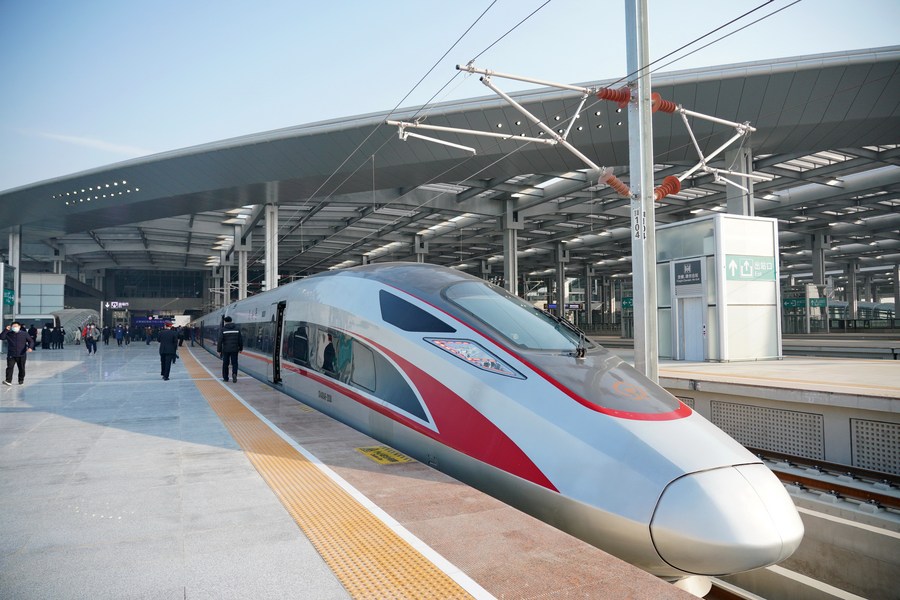
China plans railway line through the disputed Aksai Chin region

China is planning to build multiple railways in the Tibet autonomous region, including the Shigatse-Pakhuktso section of the Xinjiang-Tibet Railway which is close to the Line of Actual Control (LAC) and through the disputed Aksai Chin region.
According to the medium- and long-term rail network plan released by the Tibet Autonomous Region (TAR) Development and Reform Commission on its official website recently for the 14th Five-Year Plan period (2021-25), “the region will expand its railway network and improve its quality.”
Three-fold increase
This would mean expanding the TAR rail network from the current 1,400 km to 4,000 km by 2025, including new routes that will run up to China’s borders with India and Nepal.
Also read: China building new dam in Tibet on Ganga tributary close to India border: Report
The plan notes that by 2025 multiple railway projects will have seen progress, including the smooth implementation of the Ya’an-Nyingchi section of the Sichuan-Tibet Railway (currently underway), the Shigatse-Pakhuktso section of the Xinjiang-Tibet Railway and the Bomi-Ra’uk section of the Yunnan-Tibet Railway.
The Xinjiang-Tibet Railway will roughly follow the route of the G219 national highway, also known as Tibet-Xinjiang Highway which runs along the southwestern border of China. The construction of G219 through Aksai Chin had created tensions between India and China in the lead-up to the 1962 war.
Passing close to LAC
The proposed railway would start at Shigatse in Tibet, and run northwest along the Nepal border, before cutting north through Aksai Chin and terminating at Hotan in Xinjiang. The planned route will pass through Rutog and around Pangong Lake on the Chinese side of the LAC. The first section, from Shigatse to Pakhuktso, will be completed by 2025, with the rest of the line, to Hotan, expected to be finished by 2035, The Hindu quoting the TAR commission reported.
“By 2025, the construction of several railway projects, including the Ya’an-Nyingchi section of the Sichuan-Tibet Railway, the Shigatse-Pakhuktso section of the Xinjiang-Tibet Railway, and the Bomi-Ra’uk section of the Yunnan-Tibet Railway, will see great progress,” reports appearing in the Chinese state media said.
“Other key projects include the electrification of the existing Qinghai-Tibet Railway and upgrading the double-track railways of the Pakhuktso-Hetian line of the Xinjiang-Tibet Railway and the Lhasa-Nyingchi Railway,” a China Daily report said.
The region’s rail network will reach 4,000 km by 2025 and 5,000 km by 2035, the report quoted the railway network plan.
Linking Lhasa
Three rail lines are today operational in Tibet: the Qinghai–Tibet link which opened in 2006, the Lhasa–Shigatse rail since 2014, and the Lhasa–Nyingchi line since 2021. The Lhasa–Nyingchi line runs southeast of Tibet and near the border with India’s Arunachal Pradesh. The line is being extended further east to the provincial capital of Sichuan and Chengdu, a major economic and military centre in western China, reducing travel time between the two regional capitals from 36 hours to 12 hours, according to media reports.
Also watch: Importance of Aksai Chin for India and China
Under the plan, border railway lines will be built to Gyrong, a land port on the Nepal-Tibet border, and Yadong County in the Chumbi Valley, which borders India’s Sikkim and Bhutan.
“A comprehensive railway network linking Lhasa, the regional capital, to neighbouring provinces, including Qinghai, Yunnan and Sichuan, as well as major land ports, will also be formed by 2035,” the China Daily report said. The regional railway network will be of great significance in promoting socioeconomic development and safeguarding national security, the report quoted the plan.


